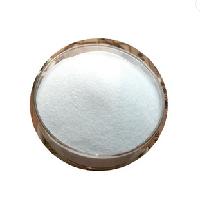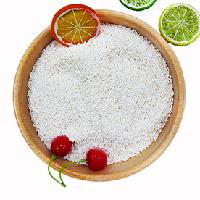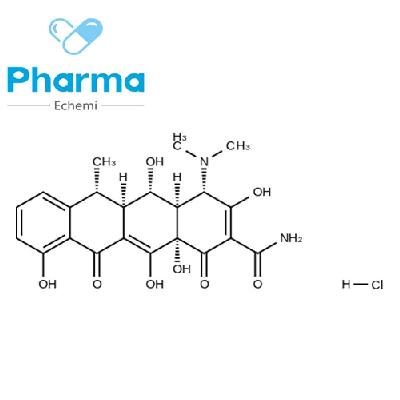-
Categories
-
Pharmaceutical Intermediates
-
Active Pharmaceutical Ingredients
-
Food Additives
- Industrial Coatings
- Agrochemicals
- Dyes and Pigments
- Surfactant
- Flavors and Fragrances
- Chemical Reagents
- Catalyst and Auxiliary
- Natural Products
- Inorganic Chemistry
-
Organic Chemistry
-
Biochemical Engineering
- Analytical Chemistry
-
Cosmetic Ingredient
- Water Treatment Chemical
-
Pharmaceutical Intermediates
Promotion
ECHEMI Mall
Wholesale
Weekly Price
Exhibition
News
-
Trade Service
As a new method of tumor treatment that has developed rapidly in recent years, tumor immunotherapy has made the situation of tumor treatment new by mobilizing the body's own immune system to fight tumors
.
In particular, immune checkpoint blocking therapy has benefited a large number of cancer patients
.
As a new method of tumor treatment that has developed rapidly in recent years, tumor immunotherapy has made the situation of tumor treatment new by mobilizing the body's own immune system to fight tumors
.
In particular, immune checkpoint blocking therapy has benefited a large number of cancer patients
.
Despite this, immune checkpoint blockade therapy still has problems such as low response rate and tumor recurrence, so more and more effective immunotherapy methods
are still needed.
As an important molecule in the body's immune regulatory network, cytokines also have an important role
in the body's anti-tumor response.
Among them, interleukin 15 (IL-15) can effectively promote the proliferation and cytotoxicity of effector cells, including effector CD8+ T cells and NK cells, so it has great potential
in anti-tumor therapy.
However, IL-15 is often accompanied by serious toxic side effects in the process of circulatory system administration therapy, which limits the clinical application
of IL-15.
Therefore, finding effective modification or modification methods to enable IL-15 to safely and effectively exert anti-tumor functions is the key to solving the application dilemma of
IL-15.
In response to this problem, the basic modification strategy is to limit the activity of IL-15 in peripheral tissues to avoid toxicity, and selectively release the activity of IL-15 in tumor tissues to exert effective anti-tumor effects
.
Peng Hua's research group, a researcher at the Institute of Biophysics of the Chinese Academy of Sciences, previously proposed that the "pro-cytokine" prodrug strategy can effectively reduce toxicity (Cell Res.
, 2021).
Recently, Peng Hua's research group and Professor Fu Yangxin of Tsinghua University School of Medicine proposed a transformation strategy
different from "pro-cytokine".
According to the structural analysis of the interaction between IL-15 and its receptors, the researchers placed IL-15 at the carboxyl end of the antibody Fc to form steric hindrance, so that Fc physically hindered the binding of IL-15 to the receptor and effectively reduced the activity
of IL-15.
When intraperitoneally injected into mice, the toxicity of IL-15 was significantly reduced, ensuring the safety of
IL-15.
In order to ensure that the covered IL-15 can effectively activate effector cells in the tumor and exert anti-tumor effects, the researchers added PD-1 antibody (aPD-1) to construct the aPD-1-IL-15 fusion protein
.
When administered systematically, aPD-1 antibodies can target tumor tissues on the one hand and bring IL-15 more to tumor sites; On the other hand, aPD-1 antibodies can anchor the covered IL-15 to effector cells that express PD-1 molecules in the tumor, especially PD-1+CD8+ T cells
.
The study found that when the aPD-1 antibody binds to PD-1+ cells, the activity of the covered IL-15 is completely restored
.
In general, the toxicity and antitumor activity of IL-15 depend on the activity of IL-15 itself and are therefore often associated
.
The new transformation strategy proposed in this study effectively separates the toxicity and anti-tumor activity of IL-15 spatially, reduces the activity of IL-15 and thus reduces the toxicity in peripheral tissues by physically covering the formation of steric hindrance, and specifically restores the activity of IL-15 on intratumoral PD-1+CD8+ T cells by PD-1 assisted targeting and auxiliary binding to effectively exert anti-tumor functions
.
Limited by the structural information of the fusion protein, the mechanism by which the obscured IL-15 regains activity is unclear
.
The researchers put forward two hypotheses, one is that when the aPD-1 antibody binds to the PD-1 molecule on the cell, the structure between Fc and IL-15 changes conformationally, so that the previously covered IL-15 is no longer obscured and the activity of IL-15 is completely released
.
The other is that the aPD-1 antibody anchors IL-15 to the cell surface, increases the local concentration of the fusion protein, and enhances the binding probability of IL-15 to the receptor, so the activity is greatly restored
.
The modified aPD-1-IL-15 fusion protein has demonstrated the ability to significantly inhibit tumor growth in a variety of mouse tumor models without toxic side effects
at all.
In terms of mechanism, pre-existing CD8+ T cells in tumors are the main effector cells of fusion proteins to exert anti-tumor functions, and fusion proteins can significantly promote the proliferation of CD8+ T cells, enhance the effector ability of CD8+ T cells, inhibit the growth of in situ tumors, inhibit the distal metastasis of tumors, and provide long-term immune memory protection
.
The research results are published in the Journal of Experimental Medicine
under the title An engineered concealed IL-15-R elicits tumor-specific CD8+T cell responses through PD-1-cis delivery.
The research work is supported
by major national science and technology projects.
Anti-PD-1-IL-15-R delivers IL-15-R through PD-1 cis, specifically binding to and activating PD-1+CD8+ T cells in tumors to exert anti-tumor function







